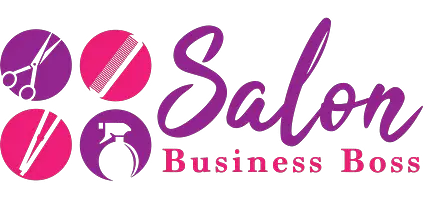To create a successful business you need to have a handle on your finances. Think of a budget like an organized document demonstrating where and how you will spend money. It will also help you understand just how much money you’re bringing in. Your budget can be created to track expenses and profits that occur monthly, quarterly, or annually. Your budget will help you address the following:
- How much money you need to make to keep your business afloat.
- Cost of operations
- An estimate of expected profits
- Identifying patterns of profits and expenses over time
A good budget will include the following categories.
- Fixed costs
- Variable costs
- Semi-variable costs
- Profits
Below I’ll go over the ways your budget will help you become more financially knowledgeable about your business. Then, I’ll give more information on the necessary parts of a budget. Finally, I’ll give you a salon business budget template to get you started.
A Budget Will Help You Know How Much You Need To Stay Afloat

The minimum amount of money that you need to support your business falls into this category. This cost is the bare-bones amount of money you must have to stay in business. It is important to know this number because of the innumerable amount of events or circumstances that could affect your income. If you have this number in mind, then you can plan and be flexible no matter the financial climate. This number is specific to each business and each business owner.
For your salon business, it might mean examining a reduction in hours for your receptionist. It’s likely that if there is an impact on your income you are serving fewer customers and might not need a receptionist as often. It could mean eliminating certain types of services to cut costs as well. If you normally provide waxing along with your hair services, you might cut waxing until business improves. Again, the things that can be eliminated to identify the minimum income needed to maintain your business are different for everyone. However, knowing this number upfront will make you feel secure when something inevitably comes up.
Cost of Operations
The cost of operations or operating cost is similar to the above-mentioned cost. The biggest difference is that it presupposes that everything you currently have in place will continue to be funded at the same rate. Items included in the cost of operations are:
- Lease and rent payments
- Utility costs
- Supplies
- Employee wages
- Marketing costs
- Insurance
- Legal Fees
Again, these costs are those that you would cover during business as usual. It would include everything needed to provide your wide variety of services and to employ your full staff. Also, it could include things like your business insurance payments and funds used to market your business. This area of your budget should remain consistent. However, utility and rent payments are likely to change throughout the life of your business. Even though your utility costs can change, they shouldn’t be so volatile that they cause your cost of operations figures to be extremely inaccurate. This number is useful for identifying what it takes to run your business at full capacity. Your budget will help you easily access this number.
An Estimate of Expected Profits
Your budget will also help you identify an estimate of the profits you expect to see. For a new business, it makes sense to be conservative in your estimated profits. This is because you have no reference for the typical amount of clients you will serve. You can start by making a goal of how many clients you’d like to see and use that to come up with this figure. Once you have a few months of business records to examine, you can create a more accurate profit estimate. This figure is important for your budget because it will help you to make sure that you aren’t spending more than you are likely to bring in. Consistently spending more than you earn will likely result in the closing of your business.
Identifying Patterns of Profits and Expenses Over Time

A budget is useful because it is a working document that will help you notice patterns over time. Being aware of patterns will help you to be flexible during times when business is slow and when business is booming. For example, you will be able to identify whether you’ll need to hire new staff or if you need to downsize based on these patterns. Having an insight into the patterns of your business can also be useful for demonstrating the benefits of an expansion to potential partners or a bank. You’ll need capital to cover an expansion, and that capital will only be received if you can offer information that supports your request.
Now, let’s move to explore the different categories you’ll need for your budget.
Fixed Costs
Fixed costs will have a designated space on every business budget. These costs are those that don’t change but are necessary to run your business. Some examples include rent or lease payments, utilities, employee salaries, and insurance. As I shared above, the salaries of your employees can change if their hours are changed to account for a drop in business. However, you’ll want to include their salaries based on them working their normal hours. These costs shouldn’t change from month to month for your business. You should be able to easily include them in your budget.
Check out our article that outlines start up costs HERE!
Variable Costs
For a salon, variable costs would include those costs that may change based on the number of clients you serve. If you have a lot of clients you’ll likely run low on supplies faster than you would if you had fewer
clients. Think about things like hair dye, shampoo, conditioner, styling creams, and products necessary for sanitizing tools. If your salon provides additional services like waxing, for example, your variable costs would also include the one-use products for that service. When you are starting this cost will likely be lower but as you progress it will likely increase. Be sure to keep an eye on variable costs to identify if there are purchasing decisions you can make that will lower costs.
Semi-Variable Costs
Semi-variable costs may not have a very high impact on your salon business. Most things will either be fixed or variable. Semi-variable costs combine both fixed and variable costs. Unlike variable costs, they are not impacted by the number of clients served. They will generally act independently of the profit you make. Some examples of semi-variable costs include things like repairs and credit card processing fees. Some budgets will identify the fixed cost and place it in that section of the budget. Then it’ll take the variable part of the cost and put it in that section. Your preferences will dictate how you handle it.
Profits
Every business owner’s favorite part of the budget is the profits section. While you are serving your clients you will also be taking into account how much you are earning. The true definition of profits in business is the amount of money you keep after accounting for expenses necessary for sustaining your business. It is up to you to select appropriate prices and expenses so that you can bring in a profit for your business. That profit will flow back into the business to help you maintain your operations or expand them if you choose. Paying attention to your profits over time will help you make necessary choices about your business throughout its life.
I’ve included a salon business budget template here for you to use to get started. You can format this template for your business by copying and pasting it into the spreadsheet application of your choice. This template includes the costs that I mentioned in this article. Feel free to add your own and customize it for the type of salon business you own. A budget is only effective if you use it. So make sure you format it so that it is easy for you to use.
Related Questions

What period should my business budget focus on?
Business budgets are formatted for tracking expenses and profits monthly, quarterly, and annually. New businesses might need to format their budgets to track expenses and profits monthly. This will allow for flexibility as you’re learning about your expenses and client traffic.
How can a business budget help me secure funding for my business?
When applying for funding for your business, a bank or alternative lending organization will want evidence of the viability of your business. You can demonstrate that by presenting your business plan and your budget. A diligently kept budget will help the lender feel confident that you will be a good steward of received funds.
Looking to start your own Salon? Get the documents you need to get organized and funded here.
Please note: This blog post is for educational purposes only and does not constitute legal advice. Please consult a legal expert to address your specific needs.

About the author. Entrepreneur and Salon Business Fan.
Hi! I am Shawn and I am a happy individual who happens to be an entrepreneur. I have owned several types of businesses in my life from a coffee shop to an import and export business to an online review business plus a few more and now I create online salon business resources for those interested in starting new ventures. It’s demanding work but I love it. I do it for those passionate about their business and their goals. That’s why when I meet a salon business owner, I see myself. I know how hard the struggle is to retain clients, find good employees and keep the business growing all while trying to stay competitive.
That’s why I created Salon Business Boss: I want to help salon business owners like you build a thriving business that brings you endless joy and supports your ideal lifestyle.

